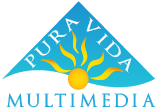Project Description
People who know how to make a screencast tutorial have an undeniable advantage in communicating complex ideas on the Internet.
Video screencasts are easy to make, and with a few video skills, they can look really good. But what really makes a great tutorial is:
Storytelling.
The web is a visual menagerie, and as you surf from place to place, pretty things can capture your attention for a moment.
What makes you stop and pay attention, though – that’s not pretty. That’s story.
In making a video screencast tutorial, it’s important that you hold your viewer’s hand, and guide them through the next few steps of their own story.
Not your story, not your company’s story, not your brand’s story.
Your user’s story.
This is where a video screencast tutorial can help bridge the gap between “What the heck is this thing?” and “I know how to do this now!”
Example of a Video Screencast Tutorial
I made this video tutorial for Ace of Sales (now Outstand) to help new users understand the platform quickly and easily. As an email marketing service, Outstand has a CRM, opt-in forms, and many pre-made email templates to choose from.
They launched a new feature that was difficult for their new and experienced users alike. Those who did try using sharecodes often got stumped and couldn’t figure it out.
This video screencast shows the new use how to use this new feature, quickly and easily. Adoption of this new platform feature soared after we released this video screencast tutorial.
How Video Screencast Tutorials Are Different
Many videos online fall into one of 3 categories:
- Edited B-roll
- Selfie Monologue
- Screencast Tutorial
These all have advantages and disadvantages. With edited B-roll, you can show a lot of different video clips with narration guiding the story that the visuals portray. With selfie monologues, you can engage with a single person telling a story directly to you.
But it is only a video screencast that can show, step-by-step, how to do something specific online. Using screen recording software (like Screenflow, which is what I use) you can go through the steps you want your user to take, and take extra moments (and graphics) to highlight where your mouse is pointing and clicking, to make it super easy for your end-user.
Do you need a video screencast made for you? Contact me here.
